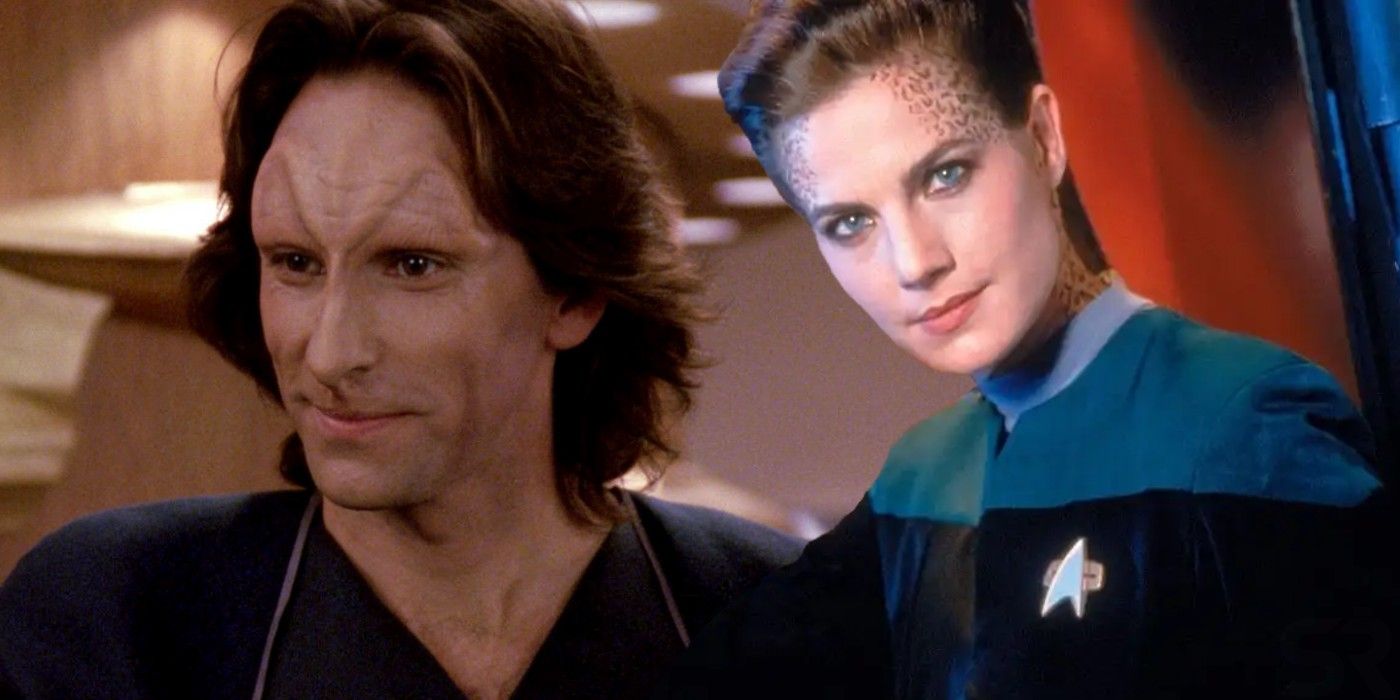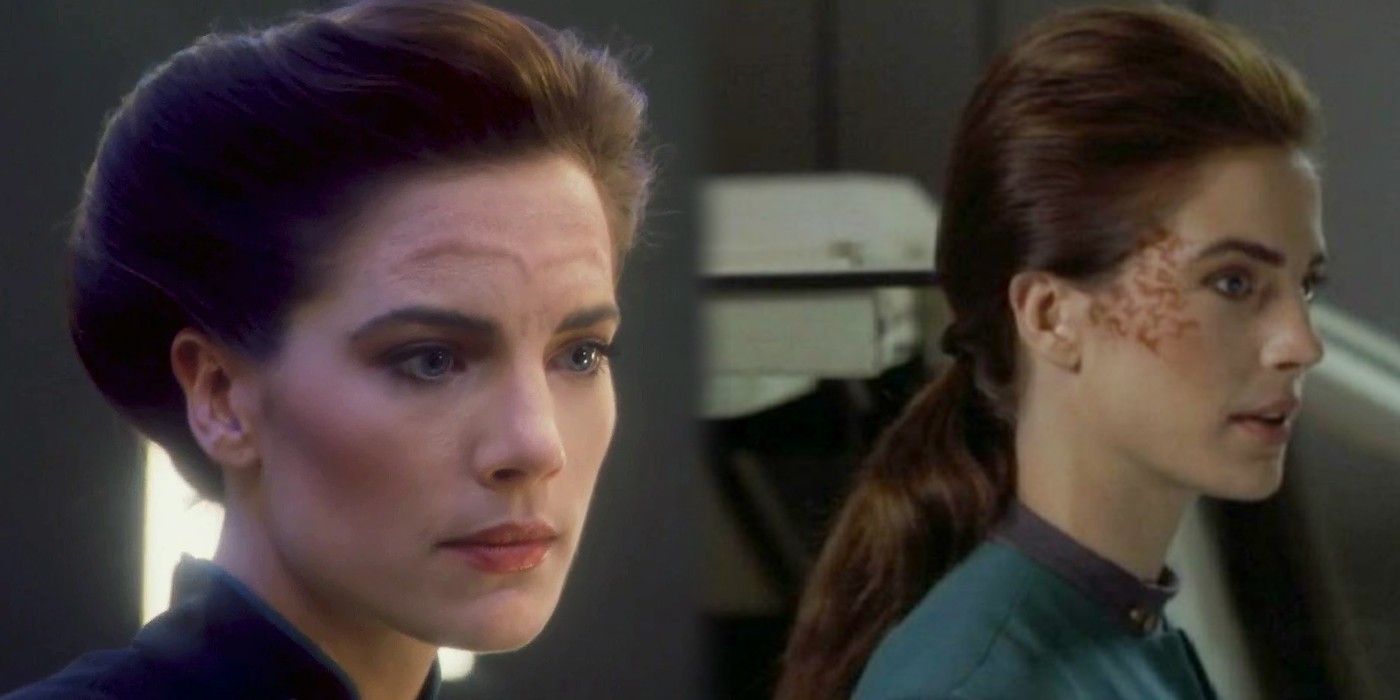The Trill, a popular Star Trek alien species, underwent a major design change when they were brought back for Star Trek: Deep Space Nine because of a request from Paramount Studios. The Trill were first introduced in Star Trek: The Next Generation, in the season 4 episode "The Host." They would go on to become one of Star Trek's most well-known alien species, mostly thanks to the exploration of their culture on Deep Space Nine through the character of Jadzia (and later Ezri) Dax.
Most of what The Next Generation had established about the Trill was brought back and expanded upon in Deep Space Nine. This included the fact that a portion of the Trill population shared their bodies with a sentient, slug-like creature called a symbiont. These individuals, known as "joined" Trill, operated as one being with the symbiont, sharing a consciousness that was a synthesis of both their personalities, memories, and skills. Besides this, however, Deep Space Nine ended up completely changing what the Trill looked like. The Next Generation used a ridged forehead prosthetic to distinguish the species as alien, but in Deep Space Nine the prosthetic was replaced by two lines of spots similar to leopard markings. These spots began on the Trill's forehead and continued down their neck and the rest of their body.
The design change would have been surprising for fans who remembered the original version of the Trill from TNG, but it was specifically requested by Paramount Studios. The executives at Paramount disliked the look of the forehead prosthetic on Terry Farrell, the actress playing Jadzia Dax. Farrell had been cast in the role for both her acting talents and her beauty, and the studio felt that the prosthetic obscured her looks too significantly. Makeup artist Michael Westmore attempted to create less and less bulky prosthetics for Farrell to wear but was eventually forced back to the drawing board entirely when the studio insisted they didn't want any prosthetics on Farrell's forehead. After this, Westmore came up with the idea for the Trill spots, taking inspiration from yet another TNG species, the Kriosian.
The Kriosian spots were mainly concentrated at the temples, but Westmore ended up extending the Trill spots to the forehead and then down the neck to the rest of the body. The extended spots were generally covered by clothing and only seen rarely, but the forehead and neck spots were a good visible reminder of the Trill's alien status. Since the spots were done with makeup and did not require any prosthetics, the studio approved the new look, and it became the permanent defining feature of the Trill. Luckily, since the species had only ever appeared in 1 episode of The Next Generation and were not well-known or well-explored until Deep Space Nine, the changes to the Trill's original design did not cause too much confusion among fans.
Star Trek has changed the design for other alien species in the past and has usually attempted to give an explanation for the change, but no such explanation was ever given for the Trill. Terry Farrell did state once that it was possible there were two different types of Trill with different markings living on opposite sides of the planet, but this idea was never confirmed or incorporated into canon. It is still possible that another Star Trek show might attempt to explain the two different Trill designs, but as it stands, fans have completely embraced the more fleshed-out version of the Trill from Star Trek: Deep Space Nine.


